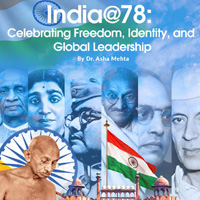India@78: Celebrating Freedom, Identity, and Global Leadership

On August 15, 2025, as India, a land of ancient civilization and diverse cultures, marks its 78th year of independence, Indians across the world—including the more than 5 million-strong Indian-American community—pause to honor the courage, vision, and resilience of the freedom fighters who broke the chains of colonialism in 1947. But Independence Day is more than a remembrance of struggle. It is a celebration of how far India has come—from a fledgling post-colonial state to a vibrant democracy and a rising global power.
This year’s celebration holds special significance. India is not only the world’s largest democracy but also its fastest-growing major economy. Its influence spans space exploration, digital innovation, global diplomacy, and soft power through culture and values. And the Indian diaspora, particularly Indian-Americans, has played a pivotal role in elevating India’s voice on the global stage.
Let us delve into the rich history of India’s independence struggle, highlight key achievements over nearly eight decades, and examine the significant contributions of Prime Minister Narendra Modi since 2014, a period marked by accelerated growth and increased global recognition.
The Dawn of a Nation: India’s Independence Struggle (Pre-1947)
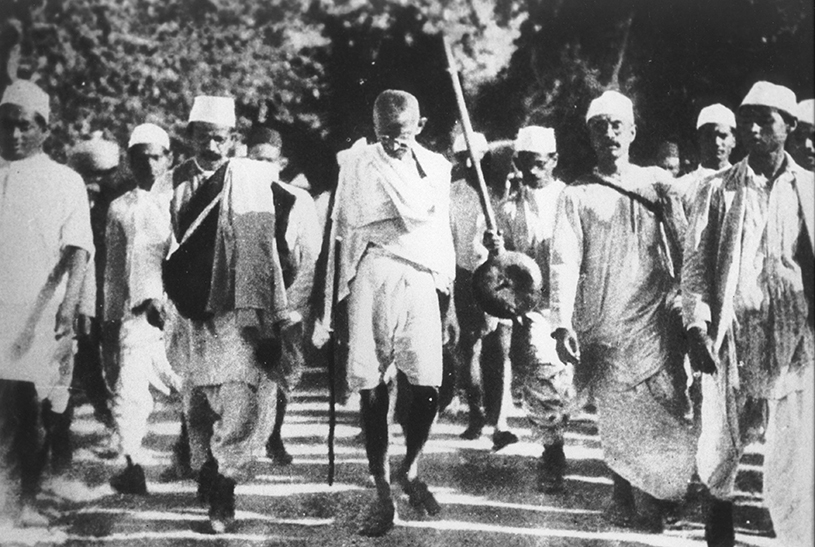 The history of India’s independence struggle is a saga of resilience, sacrifice, and unwavering determination. While the formal British rule began in 1858 after the Sepoy Mutiny of 1857 (often considered the First War of Indian Independence), the seeds of resistance were sown much earlier. The British East India Company’s exploitative policies and cultural subjugation fueled simmering discontent, leading to numerous local uprisings.
The history of India’s independence struggle is a saga of resilience, sacrifice, and unwavering determination. While the formal British rule began in 1858 after the Sepoy Mutiny of 1857 (often considered the First War of Indian Independence), the seeds of resistance were sown much earlier. The British East India Company’s exploitative policies and cultural subjugation fueled simmering discontent, leading to numerous local uprisings.
The late 19th century witnessed the emergence of organized nationalism. The Indian National Congress (INC), founded in 1885, initially sought greater representation and administrative reforms but gradually evolved into a powerful mass movement advocating for complete self-rule. Early leaders like Dadabhai Naoroji, Surendranath Banerjee, and Gopal Krishna Gokhale laid the intellectual foundations for India’s political awakening.
The early 20th century saw the rise of more radical voices and movements. The Swadeshi Movement (1905-1908), sparked by the partition of Bengal, emphasized economic self-reliance and boycotts of British goods. Revolutionary nationalists like Bhagat Singh, Chandrashekhar Azad, and Subhas Chandra Bose pursued armed resistance, inspiring a generation with their daring acts and sacrifices.
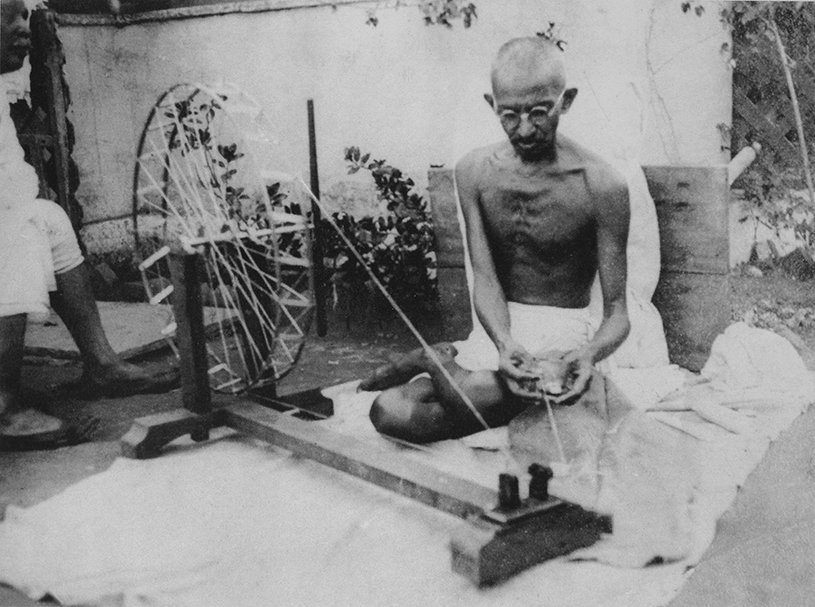 However, it was the arrival of Mahatma Gandhi on the political scene in 1915 that fundamentally transformed the independence movement. Gandhi introduced the philosophy and practice of ‘Satyagraha’ (truth-force) and non-violent civil disobedience. His mass movements, including the Non-Cooperation Movement (1920-22), the Salt Satyagraha (1930), and the Quit India Movement (1942), galvanized millions across the country, cutting across social, economic, and regional divides. These movements, characterized by widespread public participation and peaceful resistance, put immense pressure on the British Raj.
However, it was the arrival of Mahatma Gandhi on the political scene in 1915 that fundamentally transformed the independence movement. Gandhi introduced the philosophy and practice of ‘Satyagraha’ (truth-force) and non-violent civil disobedience. His mass movements, including the Non-Cooperation Movement (1920-22), the Salt Satyagraha (1930), and the Quit India Movement (1942), galvanized millions across the country, cutting across social, economic, and regional divides. These movements, characterized by widespread public participation and peaceful resistance, put immense pressure on the British Raj.
Simultaneously, other influential leaders emerged. Jawaharlal Nehru articulated a vision for a modern, socialist, and secular India. Sardar Vallabhbhai Patel became a stalwart of unification, instrumental in integrating over 500 princely states into the Indian Union. Dr. B.R. Ambedkar championed the rights of the marginalized and played a pivotal role in drafting the Indian Constitution.
Despite the unified struggle, the demand for a separate Muslim state led to the painful Partition of India in 1947. While independence was achieved on August 15, 1947, it came at the cost of widespread communal violence and mass displacement, leaving an indelible scar on the subcontinent’s history. Yet, amidst the turmoil, India embarked on its journey as an independent, sovereign nation, committed to democracy, secularism, and development.
Building a Sovereign Nation: Achievements in 78 Years of Independence
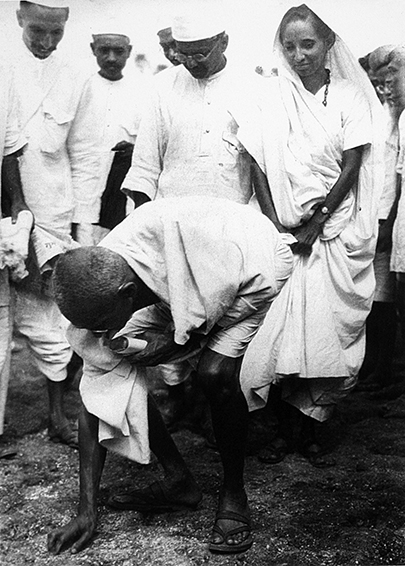 The seven decades following independence were a period of nation-building, marked by remarkable achievements against daunting odds:
The seven decades following independence were a period of nation-building, marked by remarkable achievements against daunting odds:
- Democratic Resilience and Stability: Despite predictions of its fragmentation, India sustained itself as the world’s largest democracy. Regular elections, peaceful transfers of power, and a vibrant multi-party system became hallmarks of its political landscape. This commitment to democratic values, even through challenging periods, earned global respect.
- Green Revolution and Food Security: From a state of chronic food shortages and reliance on foreign aid, India achieved self-sufficiency in food grain production by the 1970s through the Green Revolution. This transformation, driven by high-yielding varieties of seeds, improved irrigation, and modern agricultural practices, was critical in averting widespread famine and ensuring food security for its burgeoning population.
- Foundations of Space and Nuclear Prowess: India embarked on ambitious scientific endeavors. The Indian Space Research Organisation (ISRO), established in 1969, laid the groundwork for a robust space program. India also developed indigenous nuclear technology, demonstrating its scientific prowess with peaceful nuclear explosions (like Pokhran-I in 1974), establishing a credible minimum deterrence capability.
- Economic Liberalization and the Rise of IT: For decades, India followed a socialist-inspired economic model. However, the economic reforms initiated in 1991 liberalized the economy, opened it to global trade and investment, and unleashed its entrepreneurial spirit. This led to significant economic growth, particularly in the information technology and software services sector, which transformed India into a global outsourcing hub.
- Expansion of Healthcare and Education: Significant strides were made in expanding access to healthcare and education. Public health initiatives led to the eradication of diseases like smallpox and polio. The establishment of numerous universities, engineering colleges (like IITs), and medical institutions laid the foundation for a skilled workforce.
- Leadership in the Non-Aligned Movement: During the Cold War, India, under Jawaharlal Nehru, championed the Non-Aligned Movement (NAM), advocating for the newly independent nations to maintain autonomy from the two major power blocs. This stance gave India significant moral authority and a leadership role in the developing world.
A New Chapter: India Under Prime Minister Narendra Modi (2014-Present)
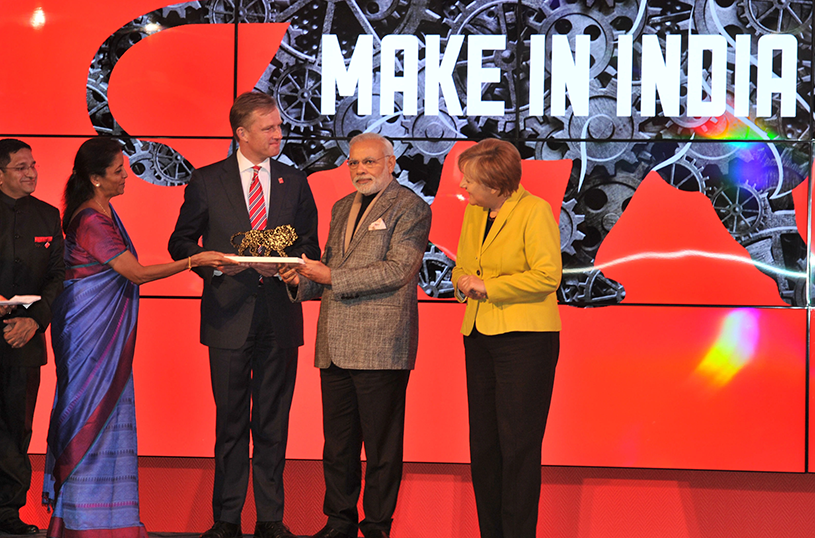 Since assuming office in May 2014, Prime Minister Narendra Modi has ushered in a period characterized by ambitious reforms, accelerated development, and a more assertive role for India on the global stage. This era has seen a distinct emphasis on “New India,” “Make in India,” “Digital India,” and “Atmanirbhar Bharat” (self-reliant India). His tenure has been marked by a focus on “delivery politics,” aiming for visible impact on the ground.
Since assuming office in May 2014, Prime Minister Narendra Modi has ushered in a period characterized by ambitious reforms, accelerated development, and a more assertive role for India on the global stage. This era has seen a distinct emphasis on “New India,” “Make in India,” “Digital India,” and “Atmanirbhar Bharat” (self-reliant India). His tenure has been marked by a focus on “delivery politics,” aiming for visible impact on the ground.
- Accelerated Digital Transformation and Financial Inclusion:
- The Digital India initiative, launched in 2015, has been a flagship program. It aimed to transform India into a digitally empowered society and knowledge economy. A key success has been the Unified Payments Interface (UPI), which has revolutionized digital transactions, making India a global leader in real-time payments. The expansion of the Jan Dhan-Aadhaar-Mobile (JAM) Trinity has significantly boosted financial inclusion, bringing millions into the formal banking system and enabling direct benefit transfers (DBT) for welfare schemes, drastically reducing corruption and leakages.
- Universal Health Coverage through Ayushman Bharat:
- The Ayushman Bharat Pradhan Mantri Jan Arogya Yojana (PMJAY), launched in 2018, is the world’s largest government-funded health insurance scheme. It aims to provide health cover of ₹5 lakh per family per year for secondary and tertiary care hospitalization to over 500 million vulnerable Indians. This initiative has been crucial in reducing out-of-pocket healthcare expenses for millions.
- Enhanced Space Capabilities and Private Sector Participation:
- Under PM Modi’s direct oversight and encouragement, ISRO has achieved landmark successes. The Chandrayaan-3 mission’s successful soft landing near the Moon’s South Pole in August 2023 and the Aditya-L1 solar mission in January 2024 have garnered global acclaim. The government has also opened up the space sector to private players, fostering a vibrant ecosystem of space startups and setting ambitious goals like establishing an Indian space station by 2035.
- Boost to Indigenous Manufacturing and Defense Indigenization:
- The ‘Make in India’ program (launched 2014) and the broader ‘Atmanirbhar Bharat Abhiyan’ (Self-Reliant India campaign, launched 2020) have prioritized boosting domestic manufacturing across various sectors, including defense. The Modi government has implemented policy reforms, such as the Defence Acquisition Procedure (DAP) 2020 and Positive Indigenization Lists, to reduce import dependence and promote indigenous development and production of defense equipment. This has led to a significant increase in defense exports.
- Global Recognition and Cultural Diplomacy:
- PM Modi has actively promoted India’s cultural heritage on the global stage. His proposal at the United Nations in 2014 led to the declaration of June 21 as International Yoga Day, now celebrated worldwide. He has frequently used multilateral platforms, including India’s G20 Presidency in 2023, to advocate for global cooperation on issues like climate change, digital public infrastructure, and sustainable development, positioning India as a bridge between the Global North and South.
- Accelerated Infrastructure Development:
- Infrastructure development has been a hallmark of the Modi government. Massive investments have been channeled into building expressways, national highways, and freight corridors and modernizing railways and airports. The PM Gati Shakti National Master Plan aims to integrate infrastructure planning and project execution, leading to faster and more efficient development.
- Economic Reforms and Ease of Doing Business:
- The Modi government has undertaken a series of economic reforms, including the implementation of the Goods and Services Tax (GST) in 2017, simplifying India’s indirect tax regime. Efforts to improve the Ease of Doing Business have led to India’s significant rise in global rankings, attracting foreign direct investment.
Economic Might: The Engine of a New India
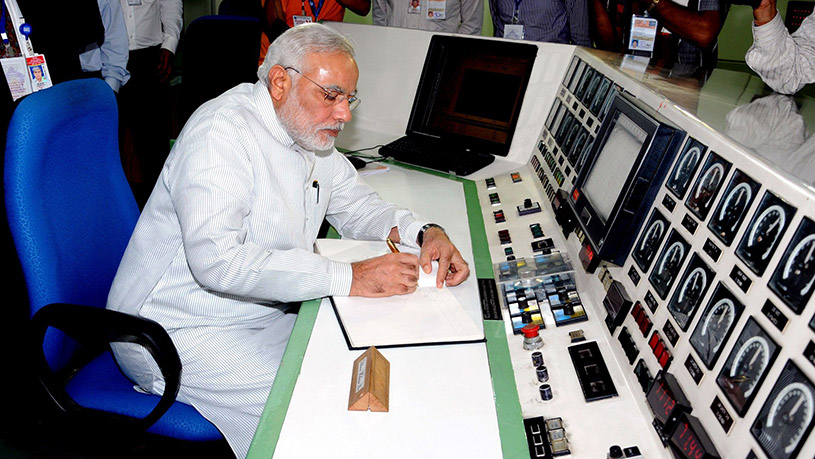
India’s GDP is projected to surpass $4.3 trillion in 2025, placing it firmly among the top five economies in the world. Its cities—from Bengaluru and Hyderabad to Pune and Gurugram—have become global centers for IT services, AI research, fintech, and biotechnology. Home to over 110 unicorn startups, India has become a hotbed of entrepreneurial energy, especially in clean energy, edtech, and digital platforms.
Government programs like Digital India, Make in India, and Startup India have reshaped the economic landscape, encouraging innovation and attracting foreign investment. India’s space program, ISRO, is admired globally, with missions like Chandrayaan-3 and Gaganyaan boosting national pride.
Yet, what makes India’s rise unique is its people-powered growth—a young population, increasingly educated, connected, and ambitious.
India’s Soaring Strength: Space and Defense Achievements
In the last decade, India has made tremendous strides in space exploration and defense, proving its capability as a rising global power—not just in economics and diplomacy, but also in science, technology, and national security.
Following the remarkable success of Operation Sindoor, India’s strategic defense capabilities have entered a new era. This bold military rescue mission not only showcased India’s tactical brilliance but also reinforced its rapid-response capabilities and global reach. The operation was executed using Made-in-India military hardware, including indigenous aircraft, surveillance drones, and communication systems—all developed under the ambitious Atmanirbhar Bharat (Self-Reliant India) initiative. From the Tejas fighter jet to the Arjun battle tank and Astra missiles, India is now manufacturing advanced defense equipment that rivals global counterparts.
On the space front, India continues to make headlines. After the celebrated Chandrayaan-3 lunar landing, the Gaganyaan mission—India’s first crewed space flight—is set to launch soon, placing Indian astronauts in orbit. The Indian Space Research Organisation (ISRO) has also ramped up international collaborations, launching satellites for dozens of countries while expanding its own constellation of Earth observation and navigation satellites.
Together, these achievements reflect a confident, capable India, rooted in indigenous innovation and global ambition. For Indian-Americans, watching India emerge as a leader in space and defense isn’t just a matter of national pride—it’s a sign that the motherland is securing its rightful place among the world’s superpowers, with strength in both vision and action.
Digital India and Make in India: Building a Self-Reliant Future
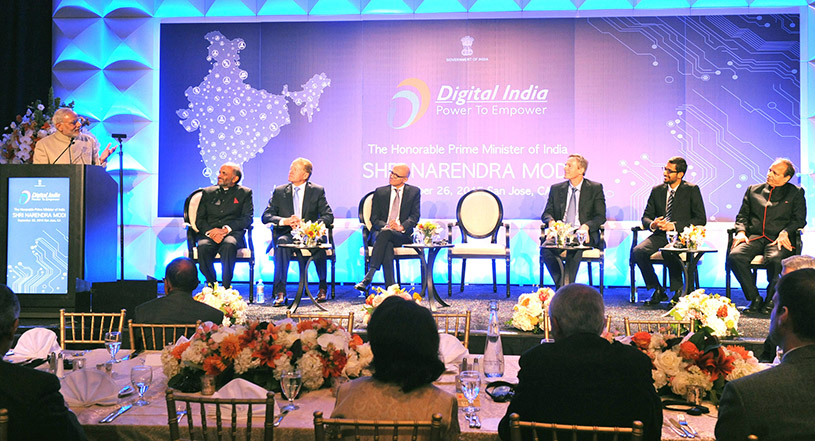
Under the visionary leadership of Prime Minister Narendra Modi, India has undergone a digital and manufacturing revolution that has transformed the daily lives of over a billion citizens and inspired global admiration. Two flagship initiatives—Digital India and Make in India—have reshaped India’s economic and technological landscape.
At the heart of Digital India lies the success of UPI (Unified Payments Interface), which has revolutionized how Indians transact. From small tea vendors in remote villages to major retail chains in urban cities, UPI has become the de facto digital payment standard. With over 10 billion transactions monthly, UPI is not only used across India but is now being adopted in countries like Nepal, Bhutan, the UAE, Singapore, and France. This seamless, real-time payment system—developed in India—is now a model for financial inclusion worldwide.
Meanwhile, the Make in India movement has boosted domestic production across sectors—defense, electronics, textiles, pharmaceuticals, and more. During the COVID-19 pandemic, when global supply chains collapsed, India surprised the world by producing its own vaccines (Covaxin and Covishield) and becoming the pharmacy of the world, supplying doses to over 100 countries.
From mobile phones to medical equipment, India is now manufacturing goods at scale, creating jobs, reducing imports, and building export strength. For Indian-Americans, these achievements symbolize a resurgent, self-reliant India—an India that doesn’t just dream big but builds, innovates, and leads on the global stage.
Prime Minister Modi’s Unique Leadership Status:
Beyond policy achievements, Prime Minister Narendra Modi’s leadership itself has garnered notable recognition. He has become the second longest-serving Prime Minister of India as of July 2025 (surpassing Jawaharlal Nehru’s uninterrupted tenure from 1947 to 1964, with Indira Gandhi holding the longest cumulative tenure). Furthermore, he has consistently maintained one of the highest approval ratings among world leaders, according to surveys by international firms like US-based Morning Consult. This sustained high approval rating, observed over several years, reflects significant domestic popularity and a strong mandate. His diplomatic engagements and presence on the global stage have also contributed to India’s enhanced international profile.
Diplomatic Emergence: From Non-Alignment to Leadership
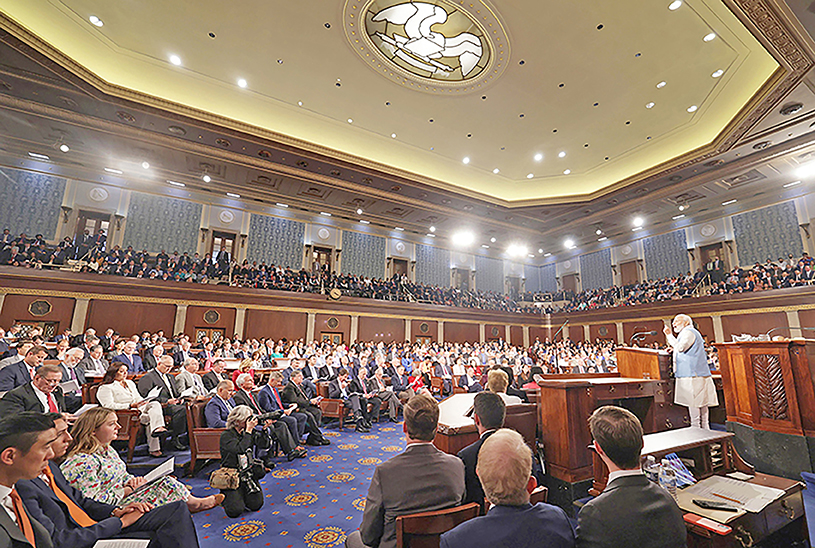 India has transitioned from a passive player to a strategic influencer in global politics. As a member of the G20, BRICS, the Quad, and the United Nations Security Council (as a rotating member), India’s voice carries increasing weight.
India has transitioned from a passive player to a strategic influencer in global politics. As a member of the G20, BRICS, the Quad, and the United Nations Security Council (as a rotating member), India’s voice carries increasing weight.
India is also a first responder in humanitarian crises, a leader in pharmaceutical exports, and a pioneer in digital diplomacy. In 2023, India hosted the G20 summit with a focus on “One Earth, One Family, One Future,” echoing the ancient Vedic mantra Vasudhaiva Kutumbakam.
India’s foreign policy now reflects confidence, cooperation, and cultural pride—a model admired by emerging economies and respected by superpowers.
The Power of the Indian Diaspora:
A significant, though often understated, contributor to India’s growing global stature and economic strength is its vast diaspora. Numbering over 32 million people worldwide, the Indian diaspora maintains strong ties to their homeland.
A remarkable testament to the strength of the Indian diaspora, especially Indian‑Americans, is the record-breaking amount of money sent back home. In fiscal year 2024–25, overseas Indians remitted a staggering $135.46 billion, marking a 14% increase from the previous year and the highest ever recorded. Indian‑Americans—who account for nearly 28% of India’s remittance inflows—have been a key driver of this surge, helping to support families, finance education, launch businesses, and fuel development projects across India. These personal transfers now rival and even exceed India’s foreign direct investment receipts, offering a stable and powerful source of external financing. For Indian‑Americans, sending money home is more than remittance—it’s a bridge of empathy, investment, and shared progress.
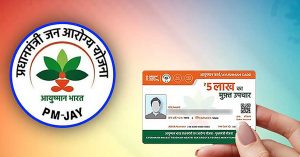
The Tricolor Across Oceans
As the Tiranga (tricolor) flutters from the Red Fort in Delhi to city halls and community centers in Atlanta, Chicago, and San Jose, it reminds us that freedom is not a finish line—it is a living flame.
India@78 is more than a milestone. It is a mirror to the past, a celebration of the present, and a launchpad for the future.
Global Indians, Global Citizens
As we celebrate India@78, it’s clear that the story of India is also the story of its people—within the nation and across its vast diaspora. Independence gave India political freedom, but it also launched a spiritual and civilizational journey of self-discovery, reinvention, and global service.
Indian-Americans embody this legacy. They are doctors who heal, engineers who build, artists who inspire, and leaders who elevate. Whether they are donating to a school in Gujarat or leading climate policy discussions in Washington, D.C., they carry India’s soul in every step.
India’s Potential as a Vishva Guru: A Teacher to the World
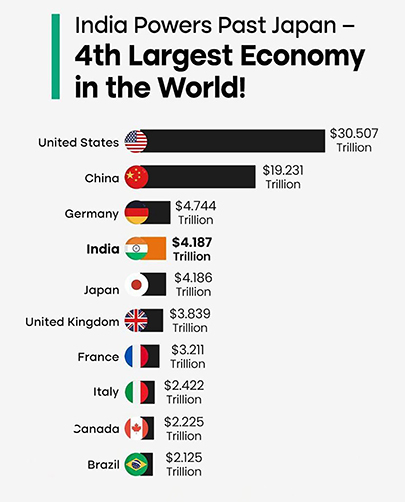 As India celebrates 78 years of independence, a powerful idea is gaining momentum—India as “Vishva Guru,” or Teacher to the World. This ancient concept, rooted in India’s civilizational wisdom, envisions the nation not merely as a political or economic power, but as a moral and spiritual guide for the modern world.
As India celebrates 78 years of independence, a powerful idea is gaining momentum—India as “Vishva Guru,” or Teacher to the World. This ancient concept, rooted in India’s civilizational wisdom, envisions the nation not merely as a political or economic power, but as a moral and spiritual guide for the modern world.
India has always offered more than material wealth. It has given the world timeless philosophies: Ahimsa (non-violence), Dharma (righteous living), Vasudhaiva Kutumbakam (the world is one family), and Yoga—ideas that address humanity’s deepest needs in an age of conflict, division, and unrest.
In a world seeking inner peace and sustainability, India’s teachings of balance, non-attachment, mindfulness, and universal harmony are more relevant than ever. From the Bhagavad Gita to Patanjali’s Yoga Sutras, from Ayurveda to Vedic math, India’s contributions span mind, body, and spirit.
Prime Minister Narendra Modi often speaks of India as a “force for good,“ promoting peace, diplomacy, and shared prosperity. India’s leadership in the International Solar Alliance, digital public infrastructure (like UPI), climate diplomacy, and vaccine distribution shows that India can lead without domination—through knowledge, compassion, and collaboration.
For Indian-Americans, this is more than rhetoric—it is a call to action. As cultural ambassadors, educators, scientists, and entrepreneurs, they are already helping share India’s light with the world.
India’s path to becoming a Vishva Guru is not about supremacy, but service—uplifting others through wisdom, innovation, and values rooted in eternal truth.
A Call to Celebrate—and Contribute
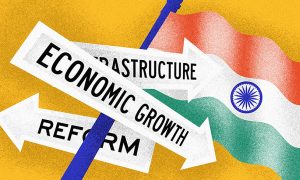 This August 15, let’s go beyond flag-hoisting and singing the national anthem. Let’s:
This August 15, let’s go beyond flag-hoisting and singing the national anthem. Let’s:
- Teach our children about the sacrifices of our freedom fighters.
- Reflect on how India’s values of peace, diversity, and dialogue can solve modern challenges.
- Volunteer or donate to causes that strengthen India’s future—from girls’ education to clean energy.
- Support Indian-American voices in media, politics, and education to shape the narrative with pride and purpose.
India’s journey from gaining independence in 1947 to becoming a significant global player in 2025 is a testament to its democratic resilience, economic dynamism, and cultural richness. The independence struggle laid the foundation for a vibrant nation, and the subsequent decades saw steady progress across various sectors. The period since 2014, under Prime Minister Narendra Modi’s leadership, has witnessed an intensified focus on digital transformation, social welfare, strategic autonomy, and a more assertive global role. As India continues its trajectory towards becoming a developed nation, its blend of ancient wisdom, democratic values, and modern aspirations positions it as a crucial voice and contributor to the evolving global order.
To every Indian, whether in Mumbai or Miami, Delhi or Dallas
Happy Independence Day.
Jai Hind.
About the author
Dr. Asha Mehta, retired Indian-American professor with decades of experience in Indian affairs and history, she specialized in modern Indian political developments, post-colonial studies, and U.S.–India relations. Over the course of her academic career, she authored several acclaimed books and numerous scholarly articles on South Asian history. Her insights have been widely sought, and she has been invited to speak at national and international forums on Indian diplomacy and cultural heritage. Even in retirement, she continues to mentor students and contribute to public discussions on India’s evolving global role. Her lifelong dedication to education and cross-cultural understanding remains a cornerstone of her legacy.

